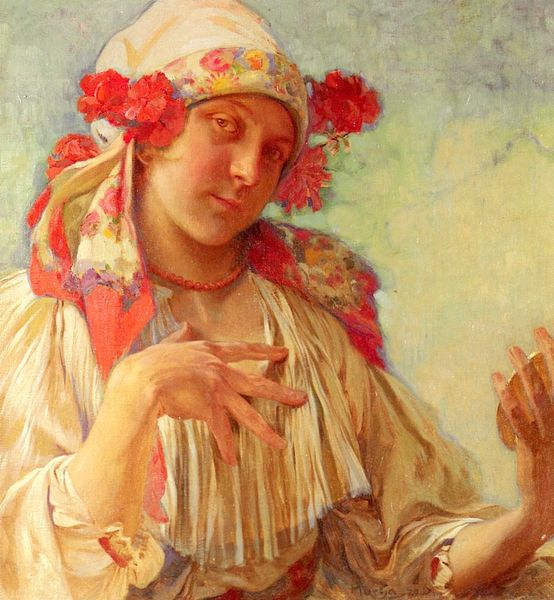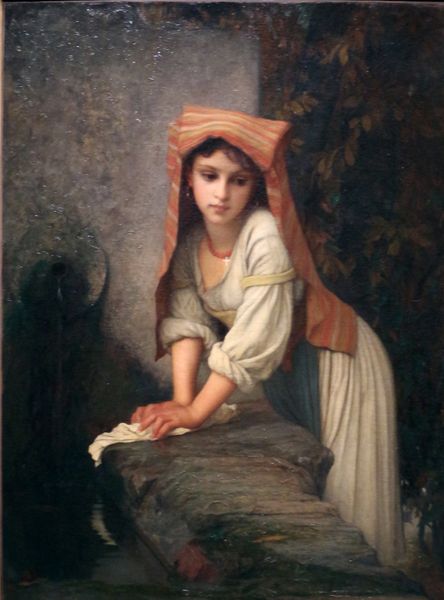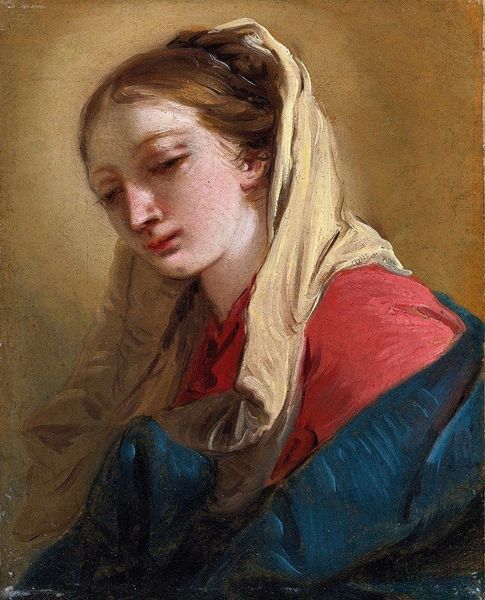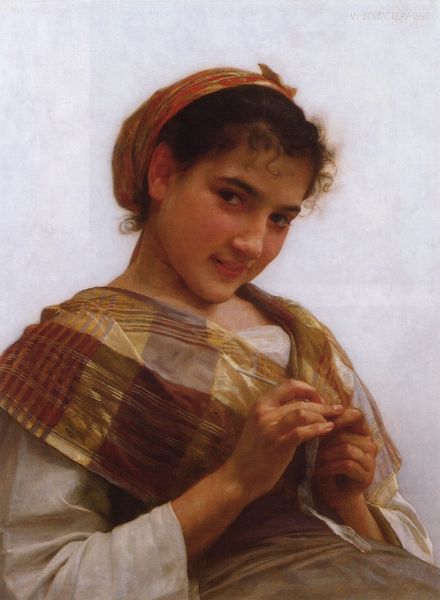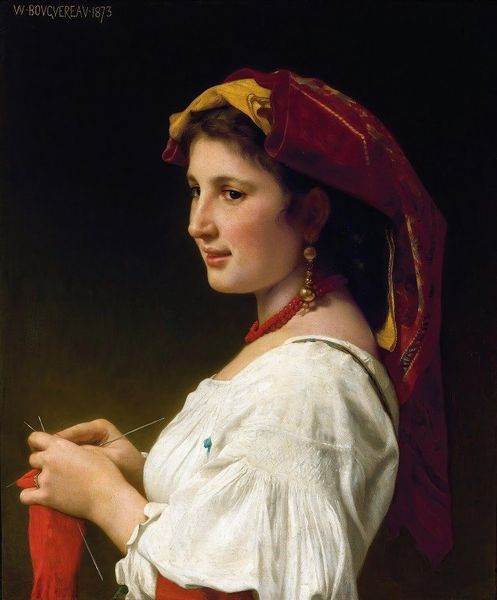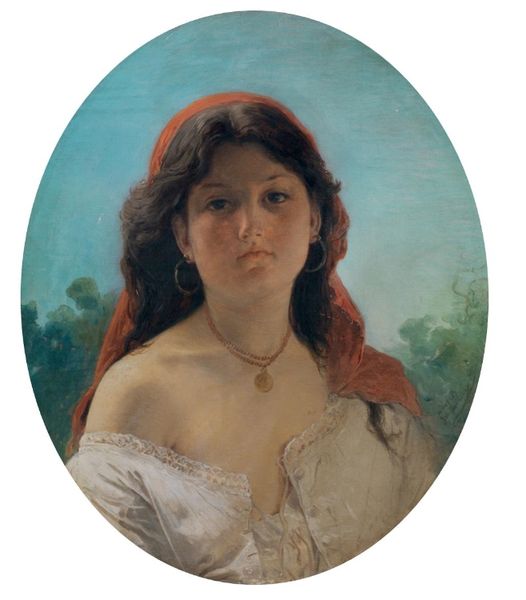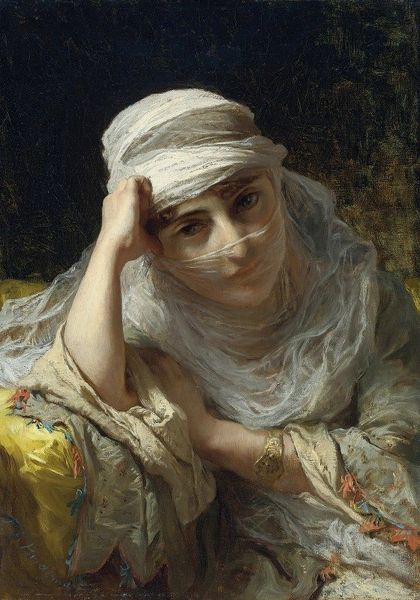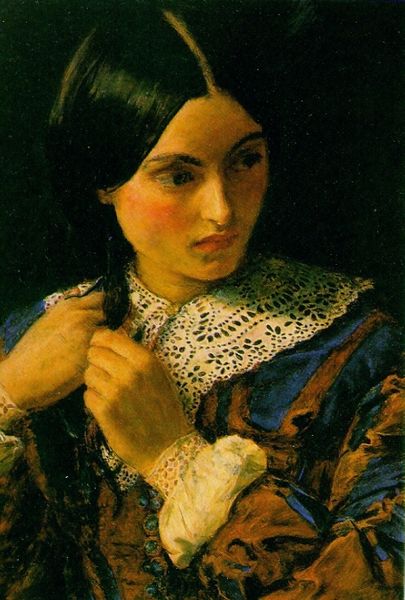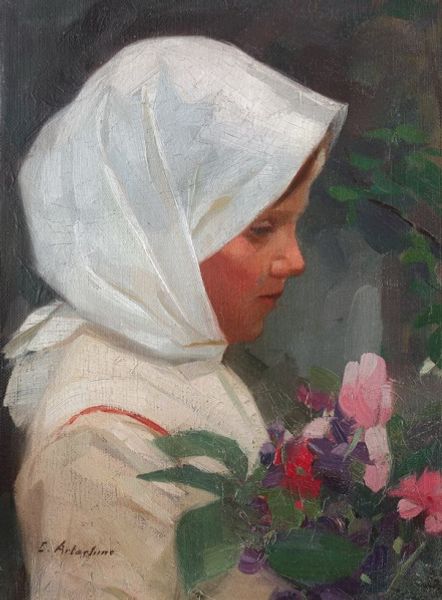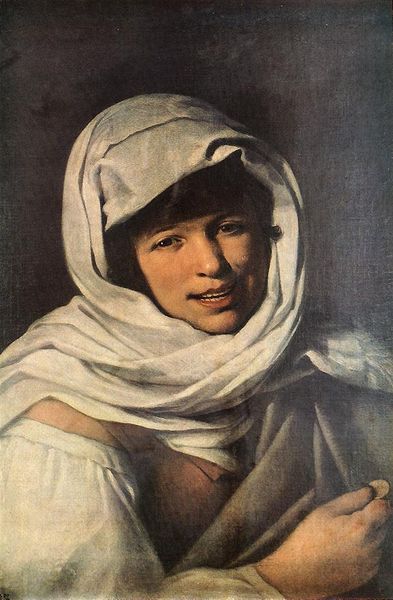
Dimensions: 72 x 65 cm
Copyright: Public domain
Curator: Welcome. Today we’re exploring Alphonse Mucha’s "Portrait of Jiri," a tempera painting from 1925. It's housed right here in the Mucha Museum. Editor: The subject gazes directly out with a mixture of serenity and something akin to world-weariness, don't you think? There's an arresting quietness to it. Curator: Indeed. The composition itself is meticulously structured. Note how the soft draping of the white headscarf, or perhaps a turban, guides the eye toward the central figure and also emphasizes the careful control Mucha maintains over light and shadow. Editor: But the “who” is important, right? The historical moment? After the First World War, there's a longing for tradition blended with the anxiety of modernity. This subject—likely someone within Mucha's intimate circle, given the personal nature of a portrait—is holding what seems to be a wilted flower between slender fingers, the symbolist undercurrent feels really pointed. It speaks to the era's melancholy. Curator: Symbolism is key here, of course. Observe how Mucha juxtaposes the textured backdrop with the smoother surface of the figure, constructing pictorial tension through varied application of tempera. We are meant to analyze it, this opposition between textures is not coincidental. Editor: Absolutely, and it connects, too, to gendered power dynamics present in the bohemian circles in which Mucha moved. Is the flower’s presentation an act of defiance? It seems, given the setting of the sitter's hand under the cheek, an interrogation of cultural expectation that all are complicit with a changing present? Curator: While such contextualization enriches the understanding, focusing purely on external influences risks overshadowing Mucha's skill as a colorist. See the gentle gradation within the olive-green dress and turban and consider how Mucha deploys it to convey luminosity. Editor: Of course, but these artistic decisions are tied, though. He positions the flower as almost spent, which allows Mucha to position questions related to temporality, gender, class… who gets to survive shifts? Curator: A valid interpretation, yet let's return to the oval frame, drawing one inward. One can get lost, adrift from structural intentionality. Editor: Structure doesn't live in a vacuum. The intent lives somewhere, informed and propelled by outside force and internal thought. The formal aspects provide a vessel to deliver questions around historical forces and ideological issues. It reminds us of our relationship with both past and present. Curator: Perhaps the genius is holding them both at the same time: the technical brilliance but with such historical charge that all of it coalesces for the viewer, each individual.
Comments
No comments
Be the first to comment and join the conversation on the ultimate creative platform.

